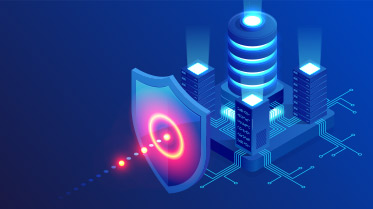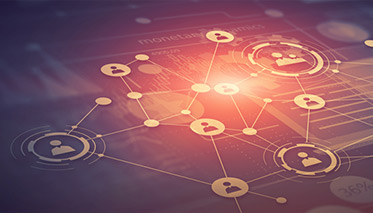The repercussions of the pandemic have been extremely far-reaching, especially given the metamorphosis in the operating models of businesses worldwide. With hybrid work becoming the new normal, organizations can no longer just think about securing devices and systems within their “physical” perimeter; they have to curate strategies that expand beyond this traditional boundary, and cater to new apps and endpoints that are increasingly being used to access enterprise assets. As digital transformation efforts intensify, neglecting the operational and legal implications of cybersecurity risks can be profound, if not dealt with effectively and on time. This article examines the impact of COVID-19 on enterprise security and the measures businesses need to take to enable a security-first mindset.
How Cybersecurity has Changed Since the Pandemic
‘Cyberattackers’ see the pandemic as an opportunity to exploit the vulnerabilities brought about by employees working from home. With 20-25% of the workforce in advanced economies expected to continue to work from home between three and five days a week going forward, according to a study by McKinsey, the data security measures currently in place are not fit for purpose. In fact, they offer the perfect ground for successful and extensive cyberattacks. A large percentage of employees today work with far less supervision and fewer security controls than ever before, making it easier for bad actors to carry out sophisticated attacks.
At the same time, with many employees today using their personal devices to access corporate information, the level of cybersecurity that the office environment used to provide is no longer viable. Using personal laptops or mobile devices that lack sophisticated enterprise-grade security controls to access corporate files and data are more exposed to cyberattacks, putting the business, its data, and all its stakeholders at extreme risk.
As the global workforce continues to work from home or via the hybrid model, the pressure on organizations to provide a safe and secure remote working environment is at an all-time high. Since employees today use a combination of unsecure devices and unsafe networks, this sudden and widespread inclusion of a variety of personal and enterprise devices calls for a greater focus on cybersecurity – mainly because of the greater exposure to risks and threats.
The hybrid network has dramatically increased the attack surface of a company, compelling organizations to devise strategies and embrace tools that can protect thousands of endpoints within the work-from-home/hybrid work model. As organizations remediate new cybersecurity vulnerabilities and realign their cybersecurity response, they face an uphill battle due to widening skills gap and reduced budgets. The new post-pandemic paradigm offers an opportunity to think strategically, rationalize cybersecurity controls, and enable long-term cost transformation.
Why Mid-market Enterprises, with Remote and BYOD Cultures, Need to Rethink Their Security Posture
With business meetings, and even daily communication and collaboration happening virtually, relying on traditional approaches to safeguard the business from attacks is no longer adequate. Today’s CIOs and CTOs need to take up a security-first approach to adapt to these changes in working practices and safeguard the business against attacks that have only grown in number and complexity, since the pandemic.
For mid-market enterprises with remote and BYOD cultures, the risk of attacks is extremely high, compelling them to rethink their security posture. Instead of embracing a one size fits all strategy to cybersecurity, they need to take a security-first approach, so they can have the required levels of controls and guardrails in place to thwart attacks, minimize risks and complexity, and lower costs.
Given the fact that the business landscape is in constant flux, the security-first model can help organizations focus on continuous monitoring and management of security risks and threats, leveraging modern tools techniques to ensure that the organization is, at all times, monitored for threats and risks, so quick action can be taken via automated policies, processes, and controls.
So, what does a security-first mindset actually require? It sets the stage for implementation of technology that enables a unified view of the business across locations, devices, and networks, so cyber risks can more easily be identified, prioritized, and remediated – as and when they arise. At the same time, a security-first mindset also allows for compliance levels to be monitored and maintained in a proactive – and not a reactive – manner, avoiding incidents that disrupt business operations with last-minute drills and action.
Starting with the Basics
The first step in implementing technology with a security-first posture begins with evaluating the current security status of all information assets: from hardware and software to networks, services, vendors, and other service providers. Since your organization’s security posture is inversely proportional to cybersecurity risk, the stronger your posture, the less you’re prone to attacks.
Minimizing the probability of exposure or loss resulting from cyber-attacks, data breaches, and other security threats, especially given the growing numbers of regulations coming into play, requires you to understand your current controls and security measures. Such an assessment is important to curate strategies to match the pace of cybercriminals, who are constantly unearthing new ways to exploit even the most sophisticated of security measures.
Once you know where your organization stands with respect to cybersecurity, and you’ve identified risks across your infrastructure, processes, and people, you need to then define your priorities, including:
- Developing the right leadership, strategy, and protection measures the business needs right now – based on unique threats the organization is vulnerable to
- Updating current security controls to overcome the false sense of security that prevents the cybersecurity strategy from being analyzed and modified according to existing conditions
- Finding, implementing, and managing security products that are needed to advance the current security posture
- Investing in the right processes and getting the right people in who can effectively address risks and safeguard the business
Steps to Strengthen the Posture
As cyberattacks continue to wreak havoc on mid-sized companies, the need for strong cybersecurity defenses at an all-time high. Enhancing cybersecurity protections has now become an urgent necessity, requiring organizations to create security and compliance measures that are proactive and preventative, as opposed to reactive.
Since your current security posture determines how vulnerable your organization is, it is important to follow critical steps to strengthen your security posture:
- Conduct frequent security assessments to unearth risks and threats your organization is exposed to; have your in-house security team do this, or turn to a competent vCISO who can conduct the required assessments for your organization
- Constantly monitor your networks, devices, and other endpoints – across office and home environments – for security gaps and loopholes; as the number of users accessing corporate information via personal devices increases, such monitoring is important to combat evolving threats
- Establish clear roles and responsibilities for effectively managing risks that have been identified, and define which team or department owns what risks for quick and effective resolution
- Make it a habit to constantly analyze gaps in your security processes and policies with frameworks like Synoptek’s SECURES Model; define the right KPIs, so you know where your organization stands with respect to security and what steps you need to take to improve your posture
- Create robust incident response plans, so any risk or threat your organization is exposed to, is dealt with in a streamlined manner
Synoptek Differentiator as an MSP
As a modern MSP, Synoptek delivers accelerated business results with enabling transformative full-life-cycle systems integration and managed technology services. We partner with organizations worldwide to help them navigate the ever-changing business and technology landscape, build solid foundations for their business, and help them achieve their business goals.
By establishing the foundational structure and governance to empower today’s modern workforce, we can help in thoroughly assessing your current security maturity level, implement the right tools and protocols, and seamlessly mitigate risk – thus driving measurable and impactful long-term results for your business.
In contrast to just playing a supporting role, we can become a strategist to enable you to transition into a state of organizational excellence and competitive advantage, allowing you to strengthen your security posture, focus on continuous improvement, and optimize value in the long run.
Conclusion
Enterprises across the world today are constantly fretting over the cybersecurity risks their business is exposed to. With any security breach capable of financially and reputationally crippling a business, implementing technology with a security-first posture can strengthen your enterprise security stance and safeguard your business and stakeholders against advanced threats, while easing your compliance burden.





